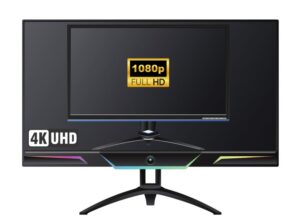Racers have long used tracking devices for vehicle performance measurement, but now there are other purposes for these devices. Car tracking devices first came up in the 60s. The difficulty to track was never a problem; the challenge was to find the right device. There was, and still is more than one concern about tracking vehicles. Concerns include safety, monitoring fuel consumption, to knowing the exact location of a fleet. Privacy and cost are also factors, as the data these devices collect can be sensitive. There are a variety of tracking devices for vehicles, each with its own fields of jobs.
GPS trackers – Monitor vehicles in real-time.
GPS trackers can track cars in real-time. They are one of the most popular devices used to monitor vehicles. GPS trackers provide reliable data, such as the exact location, speed, and direction, of the vehicle. Furthermore, GPS trackers can provide additional data, like idle time, and routes. For example, in 2-way communication, these trackers can even detect the temperature in the vehicle. In fact, autonomous vehicles use GPS trackers to constantly update their position. For example, Google’s self-driving car, Waymo, uses GPS trackers to navigate. More specific applications, such as tracking heavy-duty trucks and trailers, are also possible with GPS trackers.
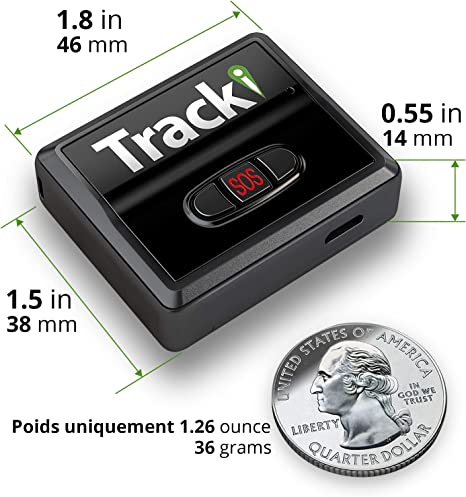
GPS Vehicle trackers are available in various forms. Passive trackers log vehicle location and speed data. Real-time, active trackers provide live streaming data. Cellular trackers require a subscription and work off cellular networks. Satellite trackers offer global tracking and require no subscription. Trackers can be portable or hardwired into a vehicle. Installation is simple and you can do it yourself in most cases. Businesses use vehicle trackers to monitor fleets and employees, consumers use trackers for personal use and peace of mind. Trackers are an invaluable tool for vehicle owners in one way or the other.
ODB-II Car trackers – Hardwired
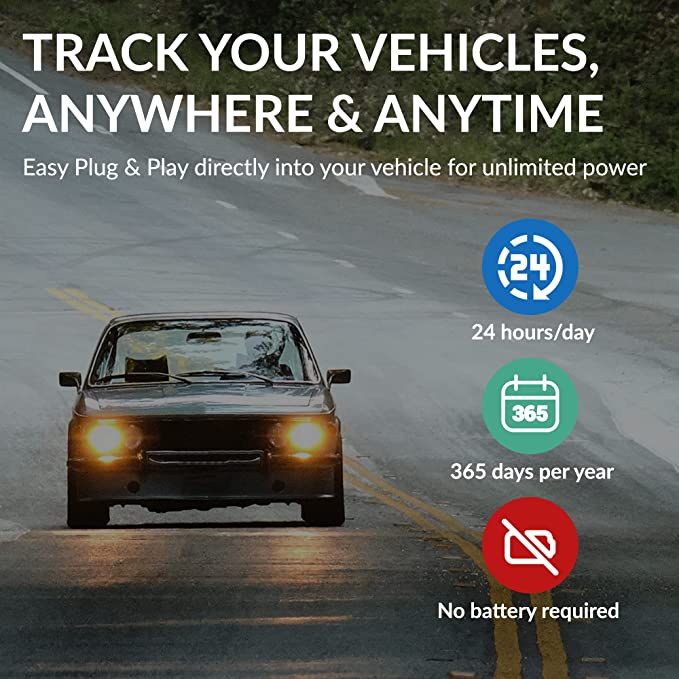
OBD-II tracker devices are popular GPS-based tracking solutions for vehicles. They can collect metrics from the vehicle’s engine. These devices also send real-time updates to a web-based dashboard or mobile app. Some specific data include speed, distance, location, and fuel efficiency. ODB-II not only helps track vehicles but also helps diagnose engine problems.
Plug and Play Car tracking – Portable
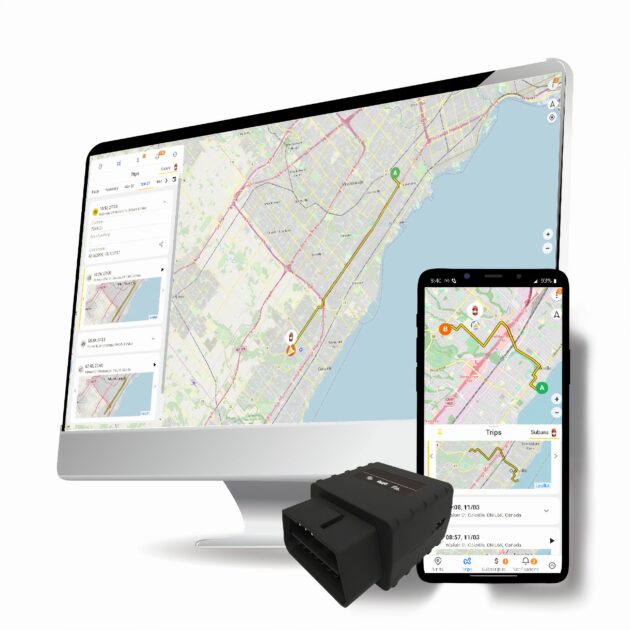
Plug and Play trackers are usually smaller in size. You can quickly and casually install and remove them. They are ideal for use in rental cars, company fleets, and vehicles multiple drivers share. Rechargeable batteries power these devices, and they typically last up to 3 weeks on a single charge. Data collected can include speed, location, and route history.
Subscription-based vehicle trackers – Cellular
Cellular trackers use cellular networks for both power and signal. They are the most reliable type of GPS tracker because they don’t rely on satellite signals. These devices use a data plan to send location data to a web-based dashboard or mobile app. In addition, they are more secure than satellite-based trackers because they have built-in encryption and authentication. An example of a cellular tracker is the LandAirSea SilverCloud, offering annual and monthly plans for vehicle tracking. However, people hate ongoing subscriptions and often turn away from these trackers.
Global coverage, no subscription required – Satellite
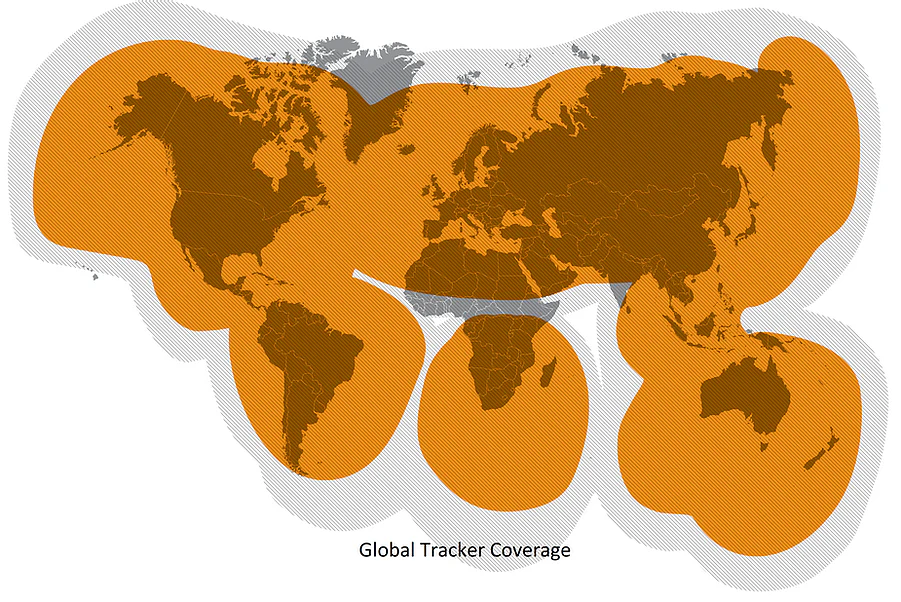
Satellite-based vehicle trackers use the Global Positioning System (GPS) for tracking vehicles. They offer global coverage, so people from anywhere in the world can use it. With these devices, observers can monitor speed, route history, and vehicle location. Some popular satellite-based trackers are the SpyTec GL300MA, the Bouncie GPS Tracker, and the GPS TRX-2.
Advanced trackers for tracking vehicles
Advanced trackers tend to be more expensive than the other types, but they offer the most features. They usually have a range of sensors, including accelerometers, gyroscopes, and temperature sensors. This data helps track driver behavior, such as harsh braking, sudden acceleration, and cornering. Some advanced trackers can even help in search and rescue missions.
ACR 2922 ResQLink
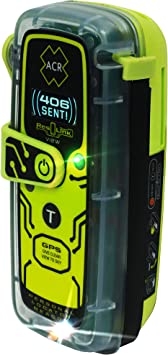
ACR 2922 ResQLink is a good example of an advanced GPS-bases. The View is a small, rugged, lightweight personal locator beacon. It is buoyant and includes attachment clips for increased wearability. Upon activation, an SOS distress signal with GPS position is sent directly to Search and Rescue forces worldwide. It also has a 406Link testing subscription option, which allows sending pre-canned non-emergency self-test and GPS test messages. It has global coverage using the 3 satellite constellations of COSPAS-SARSAT. Additionally, it has a bright LED Strobe light and an Infrared Strobe light for multiple visual signals. For SAR (Search and Rescue) services, this is really helpful due to features like: no subscription required, pre-canned messages, global coverage, and multiple visual signals. It can locate the vehicle in a short time and help Search and Rescue forces locate the vehicle. In cases of emergencies, this ACR 2922 ResQLink View is really helpful.
Vehicle Trackers for Business – Fleet tracking systems
Tracking devices offer numerous benefits for businesses. By having visibility over their vehicles, businesses can reduce fuel costs, improve driver safety, and optimize routes. Businesses can use these devices to monitor driver behavior and ensure compliance with laws and regulations. In addition, tracking devices can help businesses recover stolen vehicles. Many companies with multiple vehicles use Fleet tracking systems. They offer more advanced features than individual GPS trackers, such as automated reports and job dispatch. They may also be customizable, allowing companies to set up their own rules and tracking settings. We’ll also talk about that later on in the article.
Radio Frequency ID tags – Tracking vehicles by radio waves
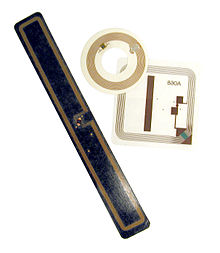
Radio Frequency ID tags track assets by radio waves. Businesses use this to track vehicles for different purposes, including transport and logistics, and even construction. RFID tags are small, inexpensive, and easy to install. Who use these tags are:
Advantages of RFIDs
They are lightweight, portable, and durable. They are also resistant to environmental conditions, such as dust, heat, and moisture. The tags have a long battery life and can last up to 10 years. Also, RFID tags are cost-effective. They are much cheaper than conventional tracking methods. According to research, the global RFID tag market is to reach $35.6 billion by 2030. This growth is mainly due to the increasing demand for tracking and monitoring solutions. Overall, RFID tags are a great solution for tracking vehicles. They are cost-effective and provide accurate data.
Industries using RFIDs
They are used in many industries to improve efficiency and reduce errors.
1. Automotive industry: RFID tags can help track vehicles in car parks and prevent theft. They can also monitor vehicle maintenance and servicing.
2. Construction: Even for construction, RFID tags help keep track of resources and equipment and ensure their efficiency.
3. Trucking company: For example, a trucking company can monitor the location of their vehicles in real-time, detect any unauthorized stops, and plan routes to save time and fuel. RFID tags can also monitor driver behavior, such as speeding or excessive idling.
4. Maintenance: Another use for RFID tags is for fleet maintenance. Tags can detect when a vehicle needs servicing and alert the driver before a breakdown occurs. This helps reduce the amount of time a vehicle is out of service and helps reduce the cost of maintenance.
Why RFID over GPS?
RFID tags can also track the movement of vehicles in real time, but unlike GPS, they can do so without relying on any external signals. This makes RFID a more reliable and cost-effective way to monitor and secure fleets of vehicles. Furthermore, RFID tags are much smaller than GPS devices, and they consume very little power, making them ideal for tracking vehicles. RFID tags can also monitor maintenance schedules, and improve driver safety. With GPS and other data, RFID tags can help companies better manage their fleet, reducing fuel consumption by up to 15%.
Mobile Asset Tracking – Versatility in Vehicle Tracking Output
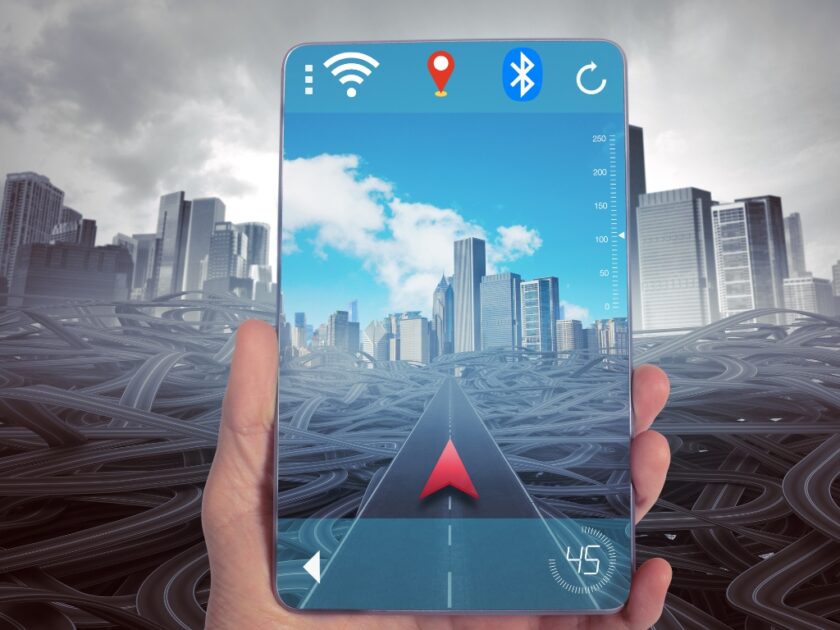
Mobile Asset Tracking is a fleet tracking system that uses GPS and cellular technology to monitor and track assets. It’s a powerful tool. Businesses save time and money with it while boosting productivity. Apart from GPS, mobile asset tracking allows for Wi-Fi and Bluetooth tracking.
Benefits include:
• Increased visibility. Track vehicles in real-time, monitor driver behavior and get alerts on unexpected stops.
• Automating processes. Automate dispatch, route, and billing processes.
Mobile asset tracking has been gaining popularity among fleet owners, as it helps to improve the efficiency of the fleet.
For businesses
Mobile asset tracking is becoming a popular choice in tracking vehicles as businesses realize its benefits. Specific platforms, like E-Trail, offer comprehensive solutions to help businesses get the most out of their mobile asset tracking. In fact, any company looking to track vehicles on mobile devices can benefit from the power of mobile asset tracking. Examples of such companies include delivery companies, retailers, logistics companies, and many more.
– Delivery companies: Track delivery vehicles and manage routes.
– Retailers: Track retail vehicles and monitor employee performance.
– Logistics companies: Monitor truck fleets and ensure timely deliveries.
VerizonConnect

VerizonConnect’s fleet tracking system is an effective way to reduce fuel costs and optimize routes for a business’s fleet of vehicles. With high-resolution maps and smart clustering technology, users can locate their vehicles and monitor their movements in real time. Additionally, VerizonConnect provides accurate ETAs to help plan trips and keep drivers on schedule. The system also allows users to monitor vehicle diagnostics and maintenance needs. This helps businesses keep their fleets in top condition and avoid costly repairs or breakdowns. By setting up geofences (something we’re discussing in a second), users can also monitor unauthorized out-of-area use, helping to prevent the misuse of company assets.
Related Post: Things That Can and Can’t be Tracked
Geofencing – Set boundaries and get alerts when crossed.
Compared to other vehicle tracking methods such as GPS tracking, geofencing offers a more accurate and efficient approach. Geofencing creates a virtual boundary around a specific zone and sends an alert when a vehicle enters or exits the set area. This technology allows companies to not only track their vehicles’ location but also monitor their speed and routes. By setting up triggers, businesses can receive notifications when a vehicle enters or leaves a predetermined area, or when it exceeds a certain speed. You can use this data to optimize route planning, reduce fuel consumption, and ensure vehicle safety.
The benefits of geofencing are numerous. Geofencing helps businesses with tracking unauthorized vehicle use and detecting/reducing the risk of cargo theft. In addition, geofencing is a secure and cost-effective solution. It requires no additional hardware or devices to be installed in the vehicle, and the system can be easily configured and maintained by the company. Overall, geofencing offers an effective and reliable tracking solution for businesses. Here is one:
Example: Fleetup
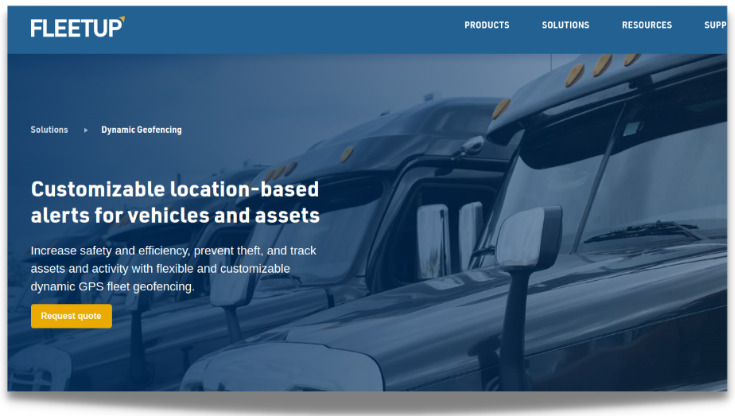
FleetUp Geofencing offers endless flexible borders for unlimited GPS fencing for tracking any vehicle. You can create geofences, assign vehicles or shipments, and monitor activities in real time. With quick identification of client sites, business warehouses, and shipyards, along with color coding, you can customize geofences to your unique requirements. Receive alerts when vehicles enter or exit geofences and analyze the time it takes to move between boundaries. Reports record exact times of entering and leaving virtual borders; an effective way to track vehicles. This is specifically helpful for monitoring unapproved use and potential incidents of theft. For example, businesses can enter any address and draw a fence of any dimension around it.
Tracking Vehicles Autonomously – With AI
By using AI-powered cameras and sensors, autonomous tracking can quickly detect and track vehicles in real time, providing detailed insights into vehicle movements. The technology is useful for a variety of applications such as fleet management, vehicle tracking, and monitoring, traffic management, and more. Autonomous tracking is able to accurately detect and track vehicles even in challenging environments, such as in dense traffic or on highways. Moreover, it can also detect different types of vehicles, such as cars, trucks, and buses.
Autonomous vehicle tracking vs traditional methods
The autonomous method offers superior speed and accuracy compared to traditional methods. Autonomous vehicle tracking is more reliable and secure than traditional methods. It can detect vehicles from long distances and provide information about the vehicle type, speed, and direction. AI algorithms also help improve accuracy and reduce false alarms. Autonomous tracking’s advantage over traditional methods is that the former drastically reduces the need for manual tracking and allows for improved decision-making. This does not only mean cost savings but also quicker responses to changing traffic conditions. Furthermore, autonomous vehicle tracking eliminates the risk of human error. Reducing human error is important because in some cases like highway monitoring, a false alarm could lead to costly consequences. So, not only is autonomous tracking more accurate, but it also has the potential to save lives.
Internal Autonomous Tracking
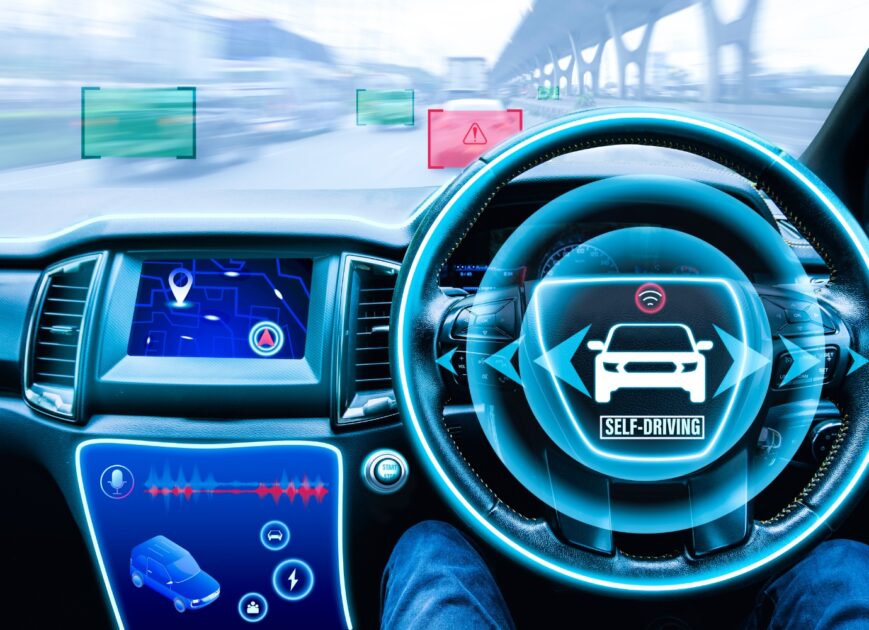
This type of autonomous tracking is the one any autonomous vehicle uses. There are a few different parts of it: One is object detection, which is the ability to identify and track objects. Another is motion prediction, which means predicting an object’s future position. Lastly, there is behavior prediction, which is the ability to predict an object’s future behavior. Behavior prediction is the most important type of autonomous tracking because it has the potential to prevent accidents.
External Autonomous Tracking

Autonomous tracking does not only mean something an EV uses. External autonomous tracking systems use a combination of sensors, AI, and big data to track vehicles. Increased use of it would free up police and other emergency services to focus on more important tasks. Many times these departments get calls about things that are not true emergencies. This new system is way more accurate than a human for tracking a vehicle. In fact, it is estimated that the system could reduce the number of false alarms by over 90%. Sensors sense the environment better than human eyes and ears, and complex AI algorithms use a variety of metrics to make sense of the data. Sensitive locations, such as schools and hospitals, should be given special attention. The system also provides better data for things like insurance companies and city planners.
Basis
The basis of the development of external autonomous tracking is by establishing communication with the different systems that are used in a city, state, or country for tracking vehicles. Europe, North America, and some Asian countries are already using this system. The main reason why this system is gaining popularity is that it is very accurate and it can track any kind of vehicle. External Autonomous Tracking helps in video analytics of a vehicle by providing the data related to the vehicle such as registration number, type of vehicle, color, and make. This system also uses AI to automatically detect any kind of vehicle. Over GPS-based methods that require more manual input and are not as accurate, this system is much more efficient in tracking vehicles.
Bottom Line
While tracking devices may vary, one thing remains certain: vehicle tracking technology is a valuable tool. Tracking cars, trucks, and other vehicles using GPS, RFID, and other devices is a great way to ensure safety and peace of mind. But still, “GPS” sticks out with other tracking methods and devices. In fact, disruptive innovation is revolutionizing the overall tracking-tech industry. As you saw in the article, traditional methods and new technologies both have a place in tracking vehicles. Autonomous and connected vehicle technology is starting to replace manual GPS-based methods and RFID. As vehicle tracking technology continues to evolve, so too do the options available to you. The price of privacy, however, is worth protecting as it evolves.
- AI-Powered PCs: Overhyped Trend or Emerging Reality? - August 21, 2024
- Princeton’s AI revolutionizes fusion reactor performance - August 7, 2024
- Large language models could revolutionize finance sector within two years - March 27, 2024

